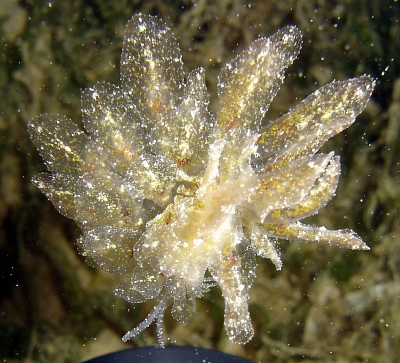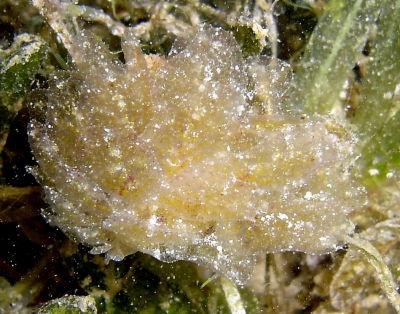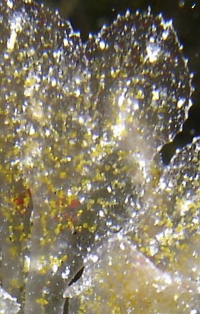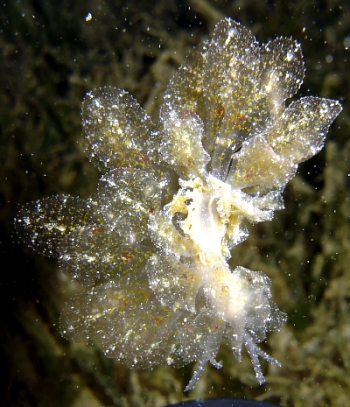Polybranchia orientalis? from the Red Sea
May 5, 2006
From: Binyamin Koretz

Dear Bill,
We were trying to figure out this fluffy, shapeless slug that Shulamit found in the grass (thinking at first that it was a Cyerce elegans), and as you can see, when I gently prodded it up into the water column for a better look, the results were quite satisfactory. It looks most like Polybranchia orientalis, despite the transparency of the cerata. Do you agree?
Locality: Eilat, Satil Area, 24m, Israel, Red Sea (Gulf of Eilat), 29 April 2006, sea grass and patch reef. Length: 3 cm. Photographer: Binyamin and Shulamit Koretz.
Best regards
Binyamin
binyamin@koretz.net



Dear Binyamin,
This is a difficult animal to photograph, because often it will drop most of its cerata if it is disturbed. Yes this is a Polybranchia. The greeny yellow specks in the cerata are the contents of the branching digestive gland ducts and in species of Cyerce the digestive gland doesn't extend past the basal stalk. Another difference is that in Cyerce there is a transverse groove across the sole of the foot just behind the head, which is absent in Polybranchia.
The degree of pigmentation of the cerata is manily dependent on how much food material is in the digestive gland ducts. In recently fed animals the cerata are quite opaque green while in animals which haven't fed for a while are quite transparent.
Best wishes,
Bill Rudman
Related messages
-
Is this poisonous? I think i was stung.
From: Leigh Maulson, May 5, 2006 -
Polybranchia orientalis from Singapore
From: Lim Han Peng, July 5, 2005 -
Sacoglossa from the Philippines
From: Erwin Koehler, April 19, 2002 -
Polybranchia orientalis from American Samoa
From: Don Barclay, September 22, 2001 -
Polybranchia orientalis from eastern Australia
From: Grey McNeil, July 5, 1999 -
Cyerce and Polybranchia
From: Bill Rudman, July 5, 1999
